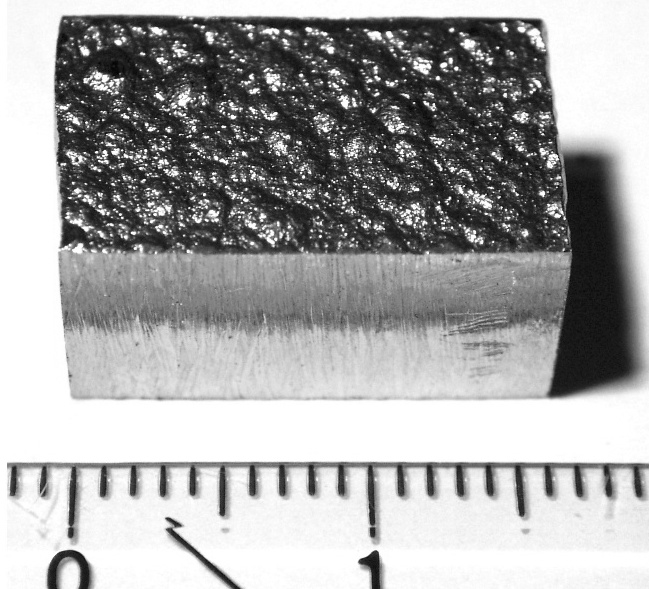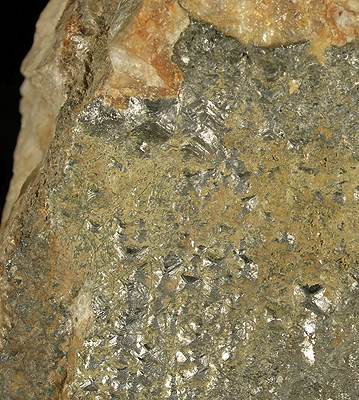|
Safflorite
Safflorite is a rare cobalt iron arsenide mineral with the chemical formula . ''Pure'' safflorite is , but iron is virtually always present. Safflorite is a member of the three-way substitution series of arsenides known as the loellingite or loellingite group. More than fifty percent iron makes the mineral loellingite whereas more than fifty percent nickel and the mineral is rammelsbergite. A parallel series of antimonide minerals exist. Safflorite along with the other minerals crystallize in the orthorhombic system forming opaque gray to white massive to radiating forms, Clinosafflorite has a monoclinic symmetry. It has a mohs hardness of 4.5 and a specific gravity of 6.9 to 7.3. Twinning is common and star shaped twins are frequently found. It was first described in 1835 from the Schneeberg District, Erzgebirge, Saxony, Germany. Safflorite occurs with other arsenide minerals as an accessory in silver mining districts. It alters to the arsenate erythrite Erythrite or red ... [...More Info...] [...Related Items...] OR: [Wikipedia] [Google] [Baidu] |
Cobalt
Cobalt is a chemical element with the symbol Co and atomic number 27. As with nickel, cobalt is found in the Earth's crust only in a chemically combined form, save for small deposits found in alloys of natural meteoric iron. The free element, produced by reductive smelting, is a hard, lustrous, silver-gray metal. Cobalt-based blue pigments (cobalt blue) have been used since ancient times for jewelry and paints, and to impart a distinctive blue tint to glass, but the color was for a long time thought to be due to the known metal bismuth. Miners had long used the name '' kobold ore'' (German for ''goblin ore'') for some of the blue-pigment-producing minerals; they were so named because they were poor in known metals, and gave poisonous arsenic-containing fumes when smelted. In 1735, such ores were found to be reducible to a new metal (the first discovered since ancient times), and this was ultimately named for the ''kobold''. Today, some cobalt is produced specifically from ... [...More Info...] [...Related Items...] OR: [Wikipedia] [Google] [Baidu] |
Cobalt Minerals
Cobalt is a chemical element with the symbol Co and atomic number 27. As with nickel, cobalt is found in the Earth's crust only in a chemically combined form, save for small deposits found in alloys of natural meteoric iron. The free element, produced by reductive smelting, is a hard, lustrous, silver-gray metal. Cobalt-based blue pigments ( cobalt blue) have been used since ancient times for jewelry and paints, and to impart a distinctive blue tint to glass, but the color was for a long time thought to be due to the known metal bismuth. Miners had long used the name ''kobold ore'' (German for ''goblin ore'') for some of the blue-pigment-producing minerals; they were so named because they were poor in known metals, and gave poisonous arsenic-containing fumes when smelted. In 1735, such ores were found to be reducible to a new metal (the first discovered since ancient times), and this was ultimately named for the ''kobold''. Today, some cobalt is produced specifically from one of ... [...More Info...] [...Related Items...] OR: [Wikipedia] [Google] [Baidu] |
Arsenide Mineral
An arsenide mineral is a mineral that contains arsenide as its main anion. Arsenides are grouped with the sulfides Sulfide (British English also sulphide) is an inorganic anion of sulfur with the chemical formula S2− or a compound containing one or more S2− ions. Solutions of sulfide salts are corrosive. ''Sulfide'' also refers to chemical compounds la ... in both the Dana and Strunz mineral classification systems. Examples * algodonite * domeykite * löllingite * nickeline * rammelsbergite * safflorite * skutterudite * sperrylite References {{mineral-stub ... [...More Info...] [...Related Items...] OR: [Wikipedia] [Google] [Baidu] |
Loellingite
Loellingite, also spelled löllingite, is an iron arsenide mineral with formula FeAs2. It is often found associated with arsenopyrite (FeAsS) from which it is hard to distinguish. Cobalt, nickel and sulfur substitute in the structure. The orthorhombic lollingite group includes the nickel iron arsenide rammelsbergite and the cobalt iron arsenide safflorite. Leucopyrite is an old synonym for loellingite. It forms opaque silvery white orthorhombic prismatic crystals often exhibiting crystal twinning. It also occurs in anhedral masses and tarnishes on exposure to air. It has a Mohs hardness of 5.5 to 6 and a quite high specific gravity of 7.1 to 7.5. It becomes magnetic after heating. Loellingite was first described in 1845 at the Lölling district in Carinthia, Austria, for which it was named. It occurs in mesothermal ore deposits associated with skutterudite, native bismuth, nickeline, nickel-skutterudite, siderite and calcite. It has also been reported from pegmatite A ... [...More Info...] [...Related Items...] OR: [Wikipedia] [Google] [Baidu] |
Rammelsbergite
Rammelsbergite is a nickel arsenide mineral with formula NiAs2. It forms metallic silvery to tin white to reddish orthorhombic prismatic crystals, and is usually massive in form. It has a Mohs hardness of 5.5 and a specific gravity of 7.1. It was first described in 1854 from its type locality in the Schneeberg District in Saxony, Germany. It was named after the German chemist and mineralogist, Karl Friedrich August Rammelsberg (1813–1899). It occurs as a hydrothermal mineral in medium temperature veins association with skutterudite, safflorite, lollingite, nickeline, native bismuth, native silver, algodonite, domeykite and uraninite. See also * List of minerals named after people This is a list of minerals named after people. The chemical composition follows name. A * Abelsonite: C31H32N4Ni – American physicist Philip Hauge Abelson (1913–2004)alfred * Abswurmbachite: Cu2+Mn3+6O8SiO4 – German mineralogist ... References Mineral Galleries* Nickel mi ... [...More Info...] [...Related Items...] OR: [Wikipedia] [Google] [Baidu] |
Arsenide Minerals
In chemistry, an arsenide is a compound of arsenic with a less electronegative element or elements. Many metals form binary compounds containing arsenic, and these are called arsenides. They exist with many stoichiometries, and in this respect arsenides are similar to phosphides. Alkali metal and alkaline earth arsenides The group 1 alkali metals and the group 2, alkaline earth metals, form arsenides with isolated arsenic atoms. They form upon heating arsenic powder with excess sodium gives sodium arsenide (Na3As). The structure of Na3As is complex with unusually short Na–Na distances of 328–330 pm which are shorter than in sodium metal. This short distance indicates the complex bonding in these simple phases, i.e. they are not simply salts of As3− anion, for example. The compound LiAs, has a metallic lustre and electrical conductivity indicating some metallic bonding. These compounds are mainly of academic interest. For example, "sodium arsenide" is a structural ... [...More Info...] [...Related Items...] OR: [Wikipedia] [Google] [Baidu] |
Iron Minerals
Iron () is a chemical element with symbol Fe (from la, ferrum) and atomic number 26. It is a metal that belongs to the first transition series and group 8 of the periodic table. It is, by mass, the most common element on Earth, right in front of oxygen (32.1% and 30.1%, respectively), forming much of Earth's outer and inner core. It is the fourth most common element in the Earth's crust. In its metallic state, iron is rare in the Earth's crust, limited mainly to deposition by meteorites. Iron ores, by contrast, are among the most abundant in the Earth's crust, although extracting usable metal from them requires kilns or furnaces capable of reaching or higher, about higher than that required to smelt copper. Humans started to master that process in Eurasia during the 2nd millennium BCE and the use of iron tools and weapons began to displace copper alloys, in some regions, only around 1200 BCE. That event is considered the transition from the Bronze Age to the Iron Age. ... [...More Info...] [...Related Items...] OR: [Wikipedia] [Google] [Baidu] |
Erythrite
Erythrite or red cobalt is a secondary hydrated cobalt arsenate mineral with the formula . Erythrite and annabergite, chemical formula , or nickel arsenate form a complete series with the general formula . Erythrite crystallizes in the monoclinic system and forms prismatic crystals. The color is crimson to pink and occurs as a secondary coating known as ''cobalt bloom'' on cobalt arsenide minerals. Well-formed crystals are rare, with most of the mineral manifesting in crusts or small reniform aggregates. Erythrite was first described in 1832 for an occurrence in Grube Daniel, Schneeberg, Saxony, and takes its name from the Greek έρυθρος (''erythros''), meaning red. Historically, erythrite itself has not been an economically important mineral, but the prospector may use it as a guide to associated cobalt and native silver. Erythrite occurs as a secondary mineral in the oxide zone of Co–Ni–As bearing mineral deposits. It occurs in association with cobaltite, skutteru ... [...More Info...] [...Related Items...] OR: [Wikipedia] [Google] [Baidu] |
Mining
Mining is the extraction of valuable minerals or other geological materials from the Earth, usually from an ore body, lode, vein, seam, reef, or placer deposit. The exploitation of these deposits for raw material is based on the economic viability of investing in the equipment, labor, and energy required to extract, refine and transport the materials found at the mine to manufacturers who can use the material. Ores recovered by mining include metals, coal, oil shale, gemstones, limestone, chalk, dimension stone, rock salt, potash, gravel, and clay. Mining is required to obtain most materials that cannot be grown through agricultural processes, or feasibly created artificially in a laboratory or factory. Mining in a wider sense includes extraction of any non-renewable resource such as petroleum, natural gas, or even water. Modern mining processes involve prospecting for ore bodies, analysis of the profit potential of a proposed mine, extraction of the desire ... [...More Info...] [...Related Items...] OR: [Wikipedia] [Google] [Baidu] |
Silver
Silver is a chemical element with the Symbol (chemistry), symbol Ag (from the Latin ', derived from the Proto-Indo-European wikt:Reconstruction:Proto-Indo-European/h₂erǵ-, ''h₂erǵ'': "shiny" or "white") and atomic number 47. A soft, white, lustrous transition metal, it exhibits the highest electrical conductivity, thermal conductivity, and reflectivity of any metal. The metal is found in the Earth's crust in the pure, free elemental form ("native silver"), as an alloy with gold and other metals, and in minerals such as argentite and chlorargyrite. Most silver is produced as a byproduct of copper, gold, lead, and zinc Refining (metallurgy), refining. Silver has long been valued as a precious metal. Silver metal is used in many bullion coins, sometimes bimetallism, alongside gold: while it is more abundant than gold, it is much less abundant as a native metal. Its purity is typically measured on a per-mille basis; a 94%-pure alloy is described as "0.940 fine". As one of th ... [...More Info...] [...Related Items...] OR: [Wikipedia] [Google] [Baidu] |
Germany
Germany, officially the Federal Republic of Germany (FRG),, is a country in Central Europe. It is the most populous member state of the European Union. Germany lies between the Baltic and North Sea to the north and the Alps to the south. Its 16 constituent states have a total population of over 84 million in an area of . It borders Denmark to the north, Poland and Czechia to the east, Austria and Switzerland to the south, and France, Luxembourg, Belgium, and the Netherlands to the west. The nation's capital and most populous city is Berlin and its main financial centre is Frankfurt; the largest urban area is the Ruhr. Settlement in what is now Germany began in the Lower Paleolithic, with various tribes inhabiting it from the Neolithic onward, chiefly the Celts. Various Germanic tribes have inhabited the northern parts of modern Germany since classical antiquity. A region named Germania was documented before AD 100. In 962, the Kingdom of Germany formed the ... [...More Info...] [...Related Items...] OR: [Wikipedia] [Google] [Baidu] |


-chloride-hexahydrate-sample.jpg)



